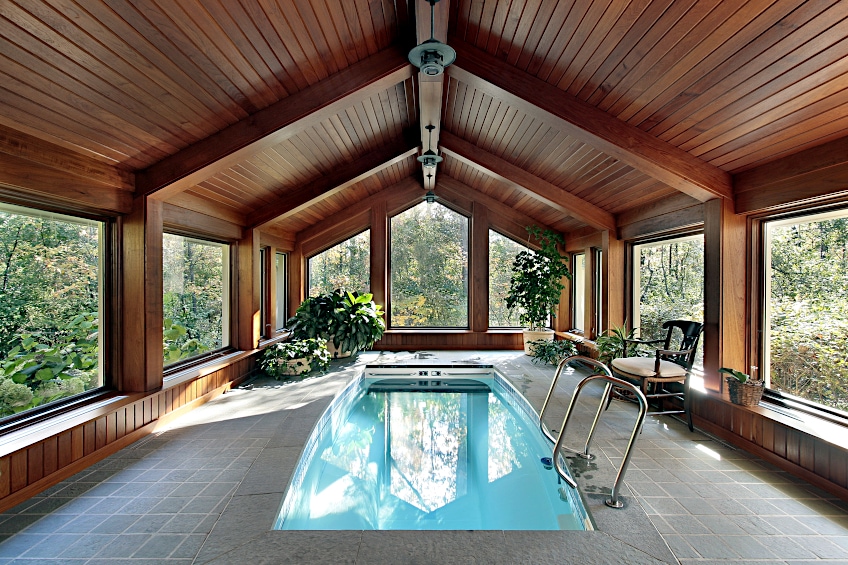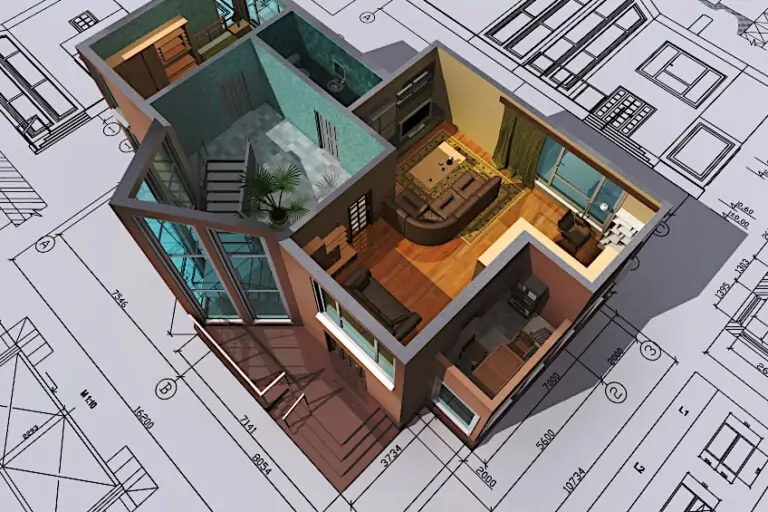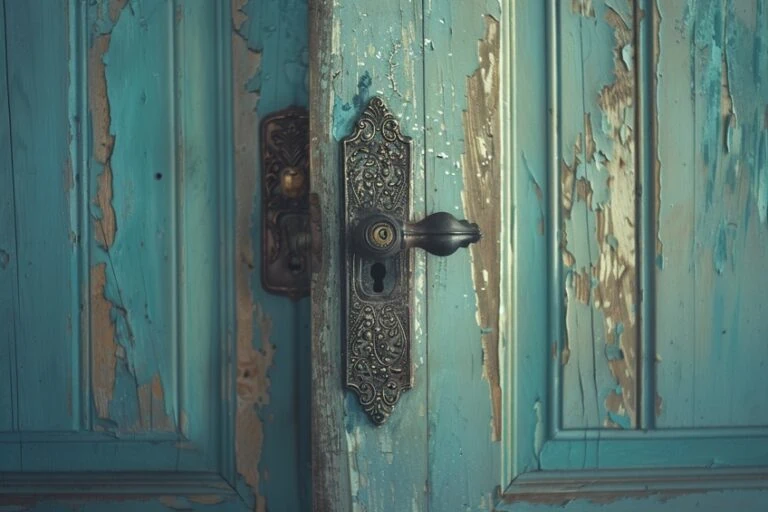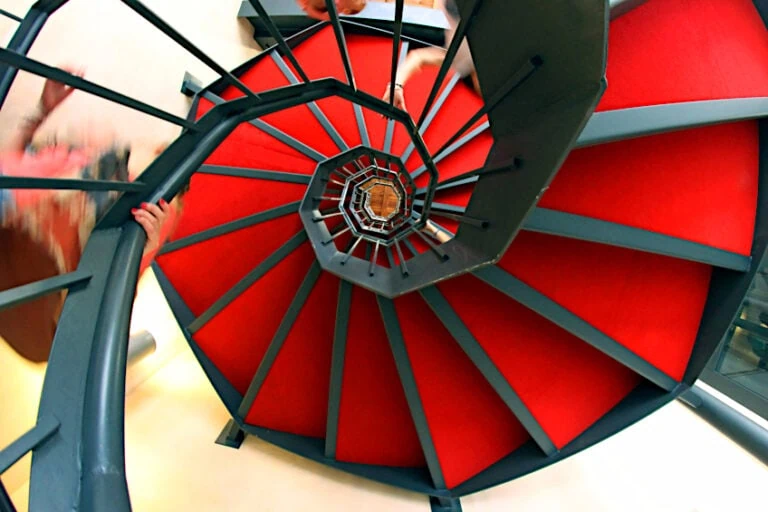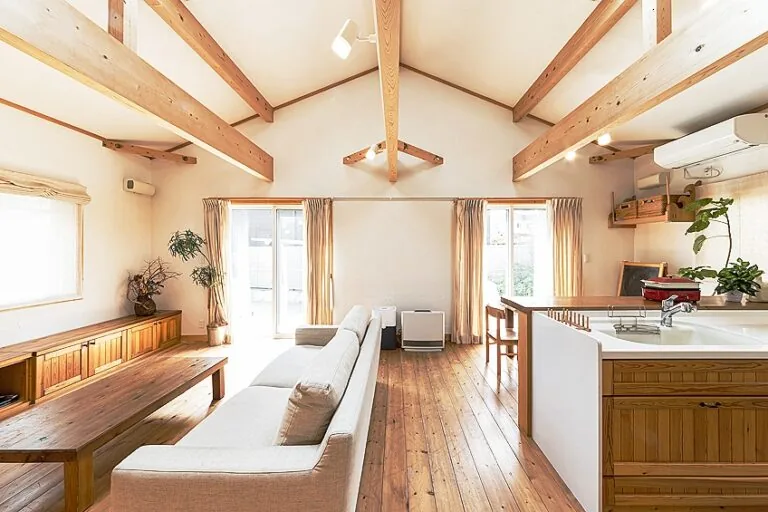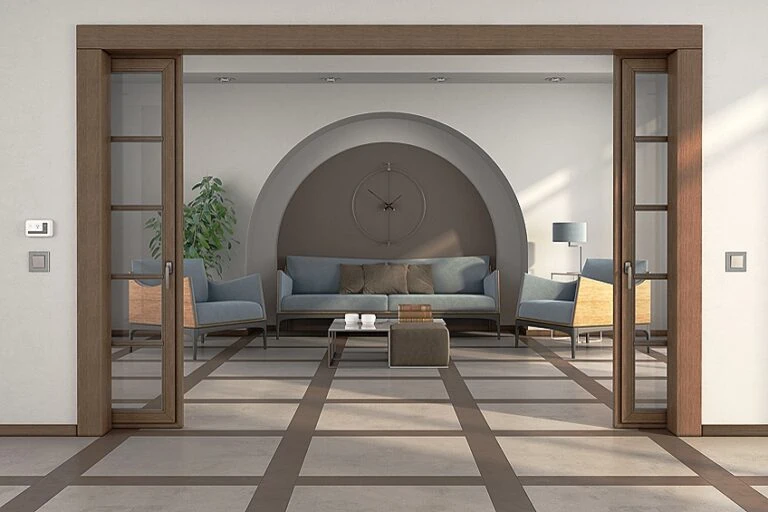Shiplap Ceiling Ideas – Creative Tongue-and-Groove Designs
This post may contain affiliate links. We may earn a small commission from purchases made through them, at no additional cost to you.
Most of us only think about our ceilings when the water heater bursts or when the paint starts to peel, which is strange considering that it’s one of the most consistent and hard-working parts of our home. Ceilings protect us from the elements and if you have an attic, house all of our Christmas decorations until that time of year rolls around. It’s also a part of your home that is always visible, so why not make it something you’re proud to look at or something that leaves your guests in awe? One of the best materials to use for your ceiling is shiplap, so let’s have a look at what shiplap is and some cool ways you can use this material to make your ceiling one that stands out from the crowd.
Contents
- 1 What Is Shiplap?
- 2 Shiplap Ceiling Ideas
- 2.1 Using Wall Continuity
- 2.2 Matching Your Beams to Your Slats
- 2.3 Using Small Beams to Create Intricacy
- 2.4 Using Vertical and Horizontal Slats
- 2.5 Using Reclaimed Wood
- 2.6 Creating a Complete Space Using Shiplap
- 2.7 Framing Your Shiplap Ceiling
- 2.8 Using White Shiplap in Your Living Room
- 2.9 Using Modern Tongue-and-Groove Ceilings
- 2.10 Unique Tongue-and-Groove Ceiling Shapes
- 2.11 Following the Beams of Your Ceiling
- 2.12 Creating Shiplap Hallway Ceilings
- 2.13 Create Contrast With Thick Wooden Beams
- 2.14 Using Tongue-and-Groove Slats in Small Spaces
- 2.15 Creating Shiplap Cathedral Ceilings
- 3 Are There Any Drawbacks to Shiplap/Tongue-and-Groove Ceilings?
- 4 Frequently Asked Questions
What Is Shiplap?
What is shiplap? Essentially, shiplap is the name given to a type of wooden board that has been used in both interior designs and as an exterior material for the walls of homes. Shiplap is pretty durable and has characteristics like insulation, tight wood grain, and availability which make it one of the go-to choices for construction applications.
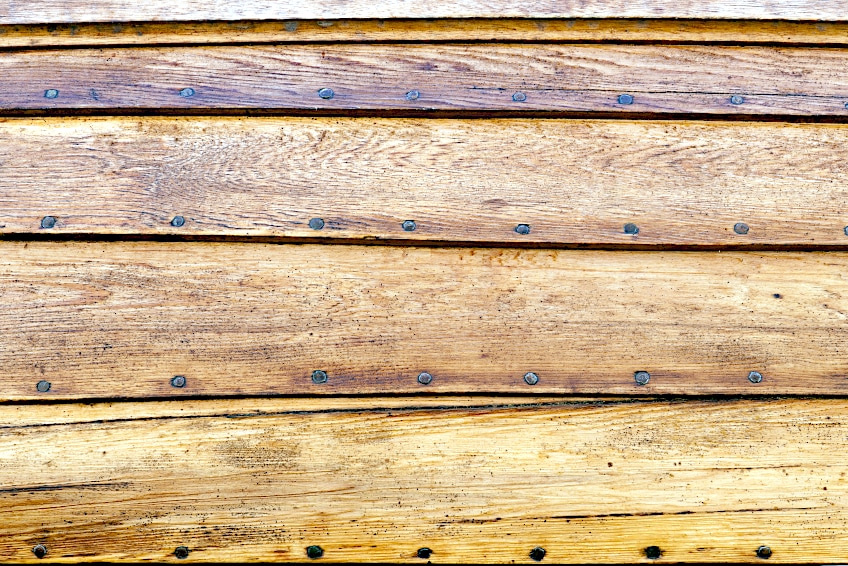
That doesn’t mean that it doesn’t look good though. In fact, shiplap is a wood type that takes to wood treatments and surface coatings really well. This is why it has become sort of a staple in modern homes, plus it’s pretty affordable and versatile compared to the alternatives, which is great! Shiplap has actually been used for hundreds of years for various applications not only in the USA but all over the globe.
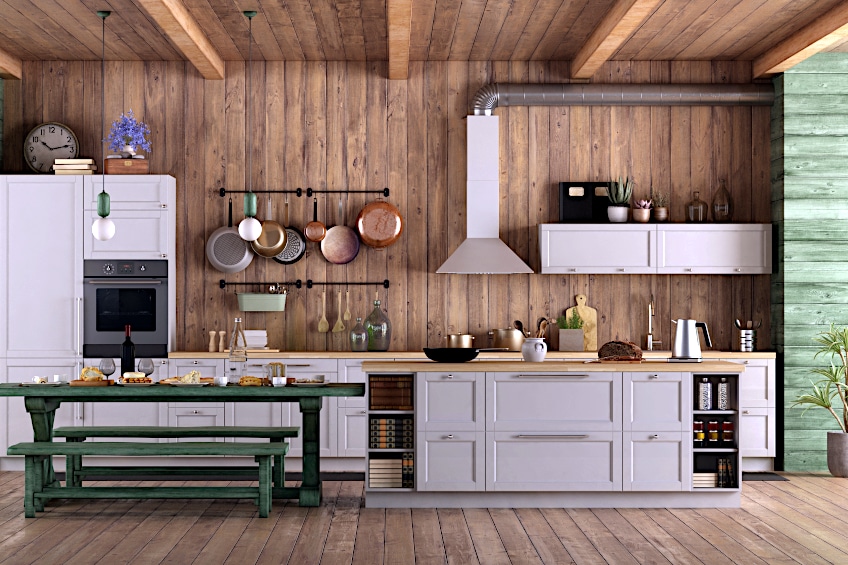
Shiplap was first used around in the late 1800s and has been forgotten about and reintroduced into mainstream construction a number of times as the material fell in and out of fashion. Some of the earliest known uses of shiplap take back all the way to the time of the Vikings when they too used this material in the construction of their ceilings.
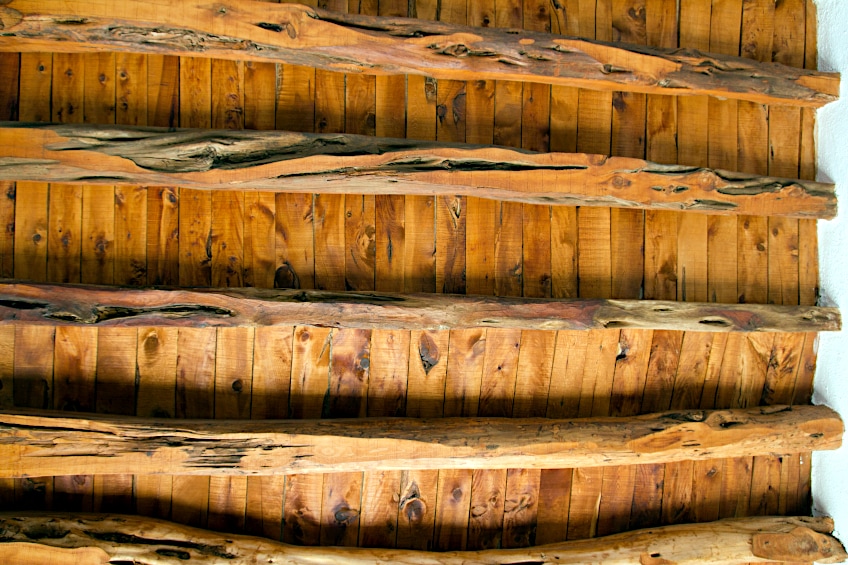
Its name is actually derived from the fact that it was once used on the sides of ships. This is a testament to the insulation and water retention capabilities of shiplap, with the amazing part being that this barely scratches the surface of its crafting applications. Is this what makes it ideal for use on ceilings compared to other materials?

Well, shiplap boards are really, really long so they can span the width of a ceiling with ease, which means you won’t have to use MDF (medium-density fiberboard) of drywall boards in sequence. It also means that it has a certain aesthetic effect on the space it’s used in. Unbroken lines create a seamless open space which can make a room feel a lot bigger than it actually is.
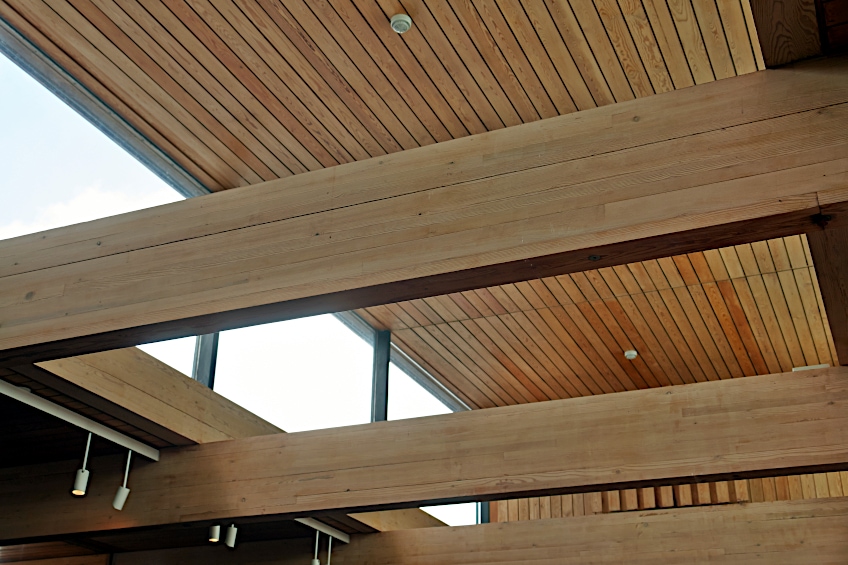
This being said, does it make shiplap the perfect choice for your ceilings? Well, this is kind of subjective, but objectively shiplap does have some drawbacks that are counterproductive to it being used as ceiling material. Due to the gaps present between the shiplap boards, it tends to accumulate a lot of dust which means it needs to be cleaned regularly.
Shiplap Ceiling Ideas
There are loads of shiplap ceiling ideas around for you to choose from. Looking at sites like Pinterest and even TikTok will show you loads of super creative ways that shiplap can be personalized to suit your personal taste, but in the interest of convenience, we’ve compiled a list of some of the coolest shiplap ceiling ideas for you to choose from. So, without further ado, let’s have a look.
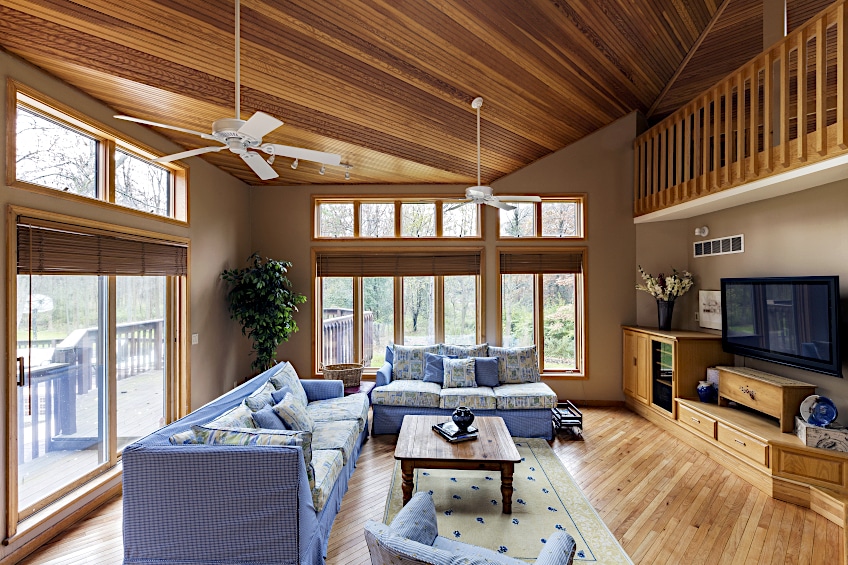
Using Wall Continuity
While shiplap is traditionally used as a material for your ceilings you shouldn’t limit yourself to just this part of your home. In fact, why not slightly extend the use of shiplap to the walls of your home too? Making a third of your wall which connects to your ceiling shiplap board can create a bleed-through effect which makes for a beautiful integrated look, which works even better if they’re painted a pastel color. This look is really unique and functions as a hybrid of the farmhouse aesthetic and modern minimalism.
Matching Your Beams to Your Slats
While color blocking seems to be a trend at the moment there is just as much aesthetic appeal to be gained from matching color pallets. This being said, matching your beams to your shiplap slats can create a sense of uniformity in a space. This essentially maintains the visual intricacy of the beams and shiplap board without it being too overwhelming to the eye, all while creating a great sense of harmony and hiding wood grain.
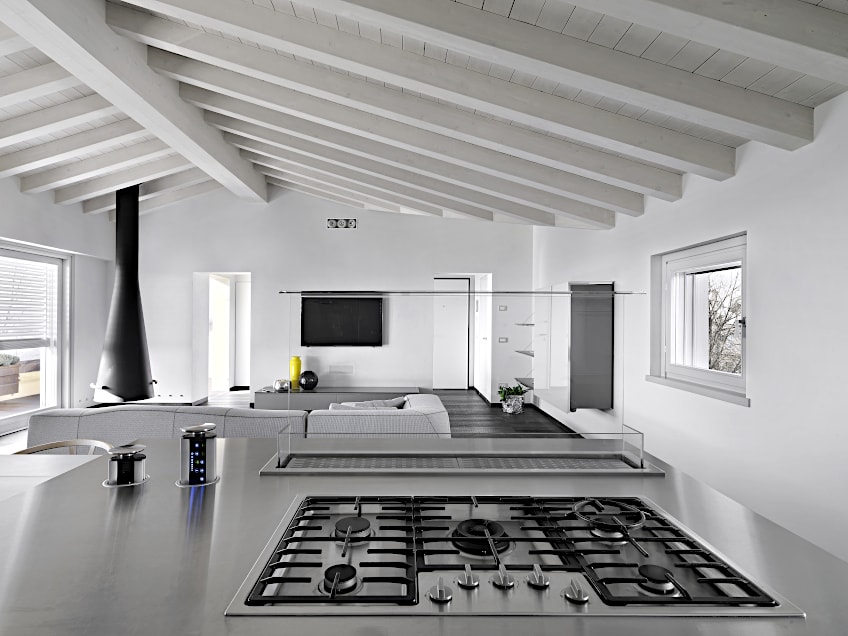
Using Small Beams to Create Intricacy
This works really well as a modern kitchen shiplap ceiling. If you’ve decided to use white shiplap slats in your kitchen it might take away from the rustic feel you were going for. If this is the case, why not try adding some really small beams across the arch of the ceiling to break up the overwhelming white of the slats? They don’t even need to be load bearing (or functional for that matter) they simply function as a cheap, easy, and effective way to add some variety to the look of your kitchen shiplap ceiling.
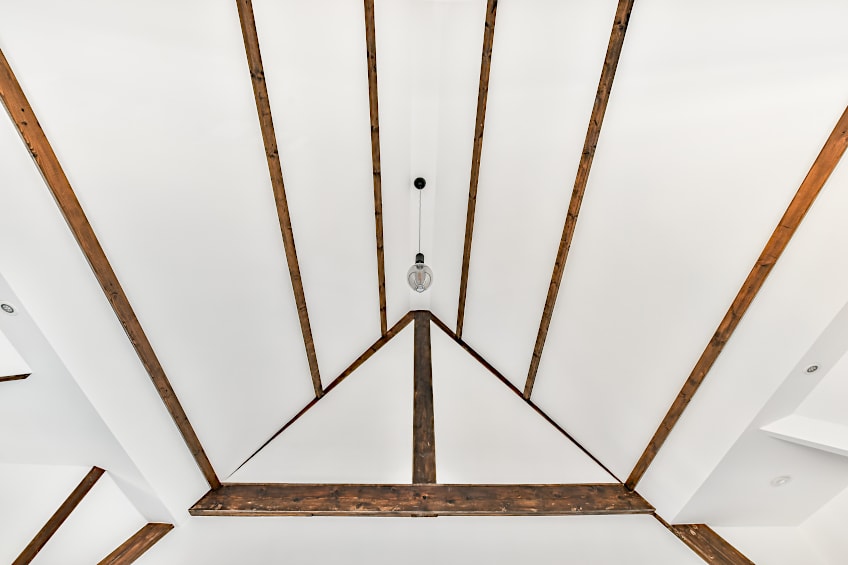
Using Vertical and Horizontal Slats
You don’t have to use shiplap on ceiling surfaces alone. Feel free to use this surface on your walls too, especially if you’re looking for a rustic farmhouse kitchen look. You shouldn’t limit yourself with the position of your planks either, how they’re orientated can affect the overall look and feel of space so do some experimenting before you commit to a single layout. Having ceiling slats vertically orientated with your wall slates horizontally orientated is an easy way to create visual intricacy while creating a clear separation between wall and ceiling.
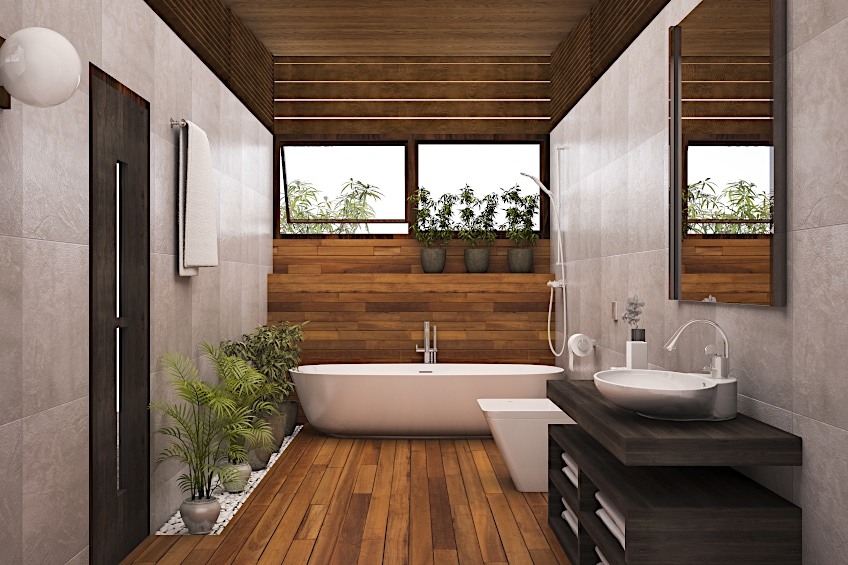
Using Reclaimed Wood
You aren’t limited to using new shiplap on ceiling surfaces either. Using reclaimed wood is really good for the environment and it provides you with an aesthetic that is unique and pretty difficult to replicate with things like wood stain or patina formulas. This being said, using reclaimed shiplap boards can be tedious and if you’re not well versed in the art of reusing wood boards it might be best to consult a professional on the condition and viability of using the boards you have in mind.
Creating a Complete Space Using Shiplap
Now, this thought may have crossed your mind since you discovered shiplap surfaces, but then you thought it might look a bit odd. If this is the case, you’d be dead wrong. Using shiplap as your way, floors and ceilings can make a space beautiful, and if you’d really like to take it a up a notch you can make the entire space one color (white works best) or you can try different finishes for each surface to really display the aesthetic range of the board.
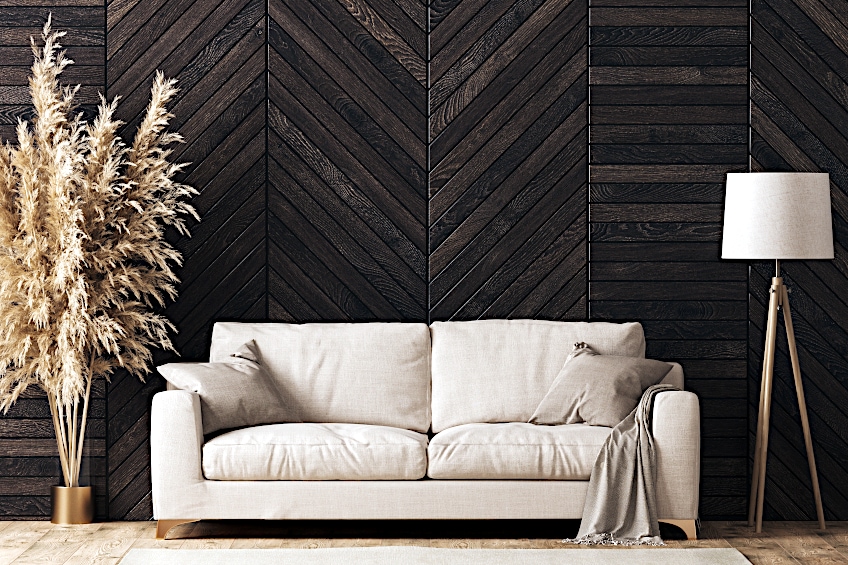
Framing Your Shiplap Ceiling
This is a great option if you like shiplap but don’t love it. Essentially, you can make a section of your ceiling (usually the center) out of shiplap board while the surrounding areas are made of drywall. It’s also a good compromise if you can’t decide between the two materials, or if you and your partner can’t agree on which ceiling looks best (creative differences are all part of the human experience!). The really cool thing about using two materials is that it adds an extra dimension to your ceiling thanks to the recess it creates.
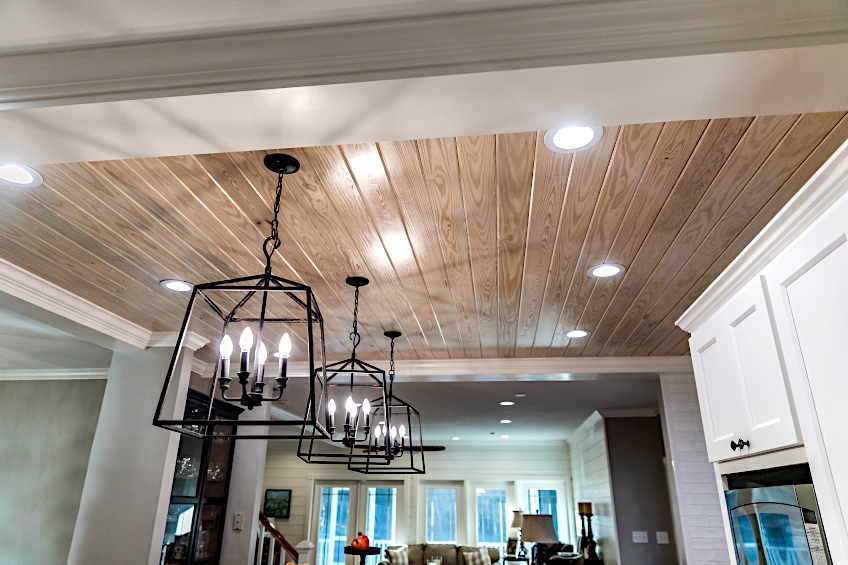
Using White Shiplap in Your Living Room
A living room shiplap ceiling is a great way to ensure that your space always feels big, warm, and inviting. Why? Living room shiplap ceiling boards are typically white which makes them reflect loads of natural and artificial light. The wood also creates a sense of comfort which balances the feeling of openness quite well. The other advantage is that white is really easy to work with when accessorizing your home, so you won’t run into any trouble when trying to decide on centerpieces or the over-color palette of the space.

Using Modern Tongue-and-Groove Ceilings
While shiplap is quite popular the modern tongue-and-groove ceiling is a new take on the old wooden slat ceiling formula. Tongue-and-groove ceilings are essentially the same as shiplap, with the only difference being that instead of the wood joining between planks being L-shaped, one plank has a wooden flange at the end which can be inserted into another plank with an inverse recess designed to receive it. Modern tongue-and-groove ceilings are easily (and regularly) misidentified as shiplap.
Unique Tongue-and-Groove Ceiling Shapes
You’ve probably seen a million tongue-and-groove ceiling ideas if you’ve been looking for some inspiration, and while the color and finish of most designs are different, they’re pretty much all simple straight planks. If you really want to spice things up, try arranging your tongue-and-groove ceiling planks in unique shapes, like in a circular fashion around light fixtures, diagonally to draw the eye to the corners of the room to show off your runners, or even crisscrossed to create the illusion of intricacy.
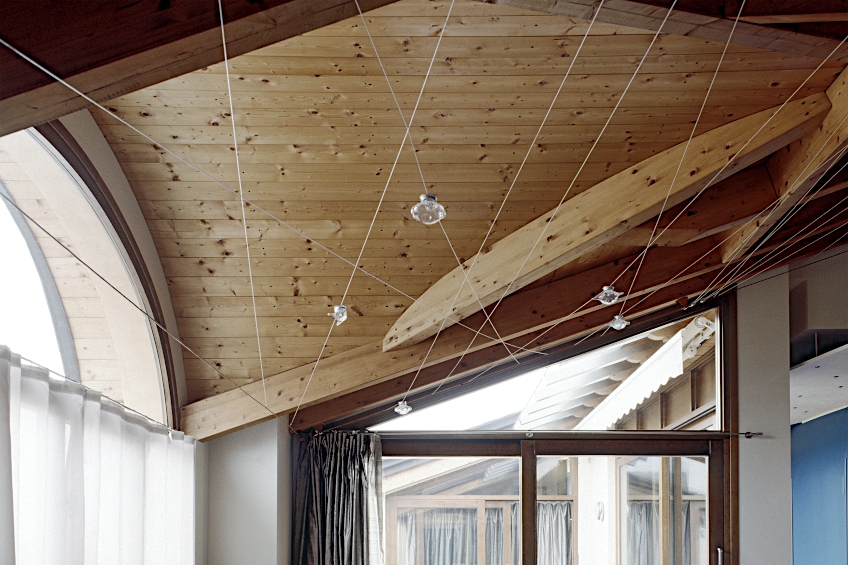
Following the Beams of Your Ceiling
While it might be your first instinct to place your shiplap ceiling boards horizontally so they run across the beams of your ceiling, a cool idea for working with a white shiplap ceiling is to have them run in the same direction as your beams. Why? Well, it creates a sense of uniformity when looked at from the ground up, and it opens up space, even more, thanks to the white color. This works especially well if the beams of your ceiling are untreated or haven’t been painted over and considering that exposed beams and piping are all the rage right now it’s a simple and affordable aesthetic to achieve.
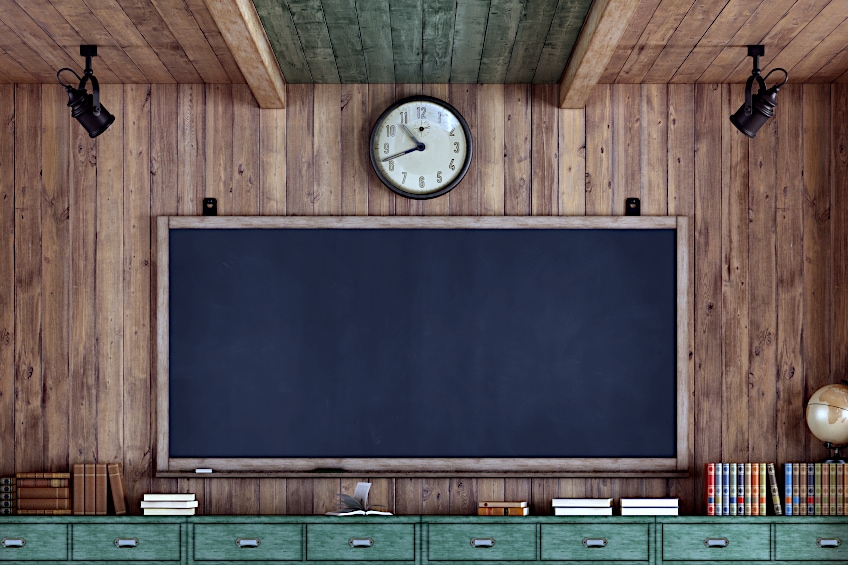
Creating Shiplap Hallway Ceilings
If you aren’t really into the white shiplap ceiling idea, then why not consider exposed shiplap? While a white shiplap ceiling works well in a kitchen it can make smaller spaces feel a bit odd, which is where exposed or unpainted wood can be used. Raw shiplap makes smaller spaces feel cozier and it can break the mundane feel of most hallways. The cool thing about using shiplap slats in spaces like these is that you have the option of running these slats in the direction the hallway follows which can create a liminal feel that can feel quite inviting, or you can have them placed horizontally to really separate the space from bigger ones.
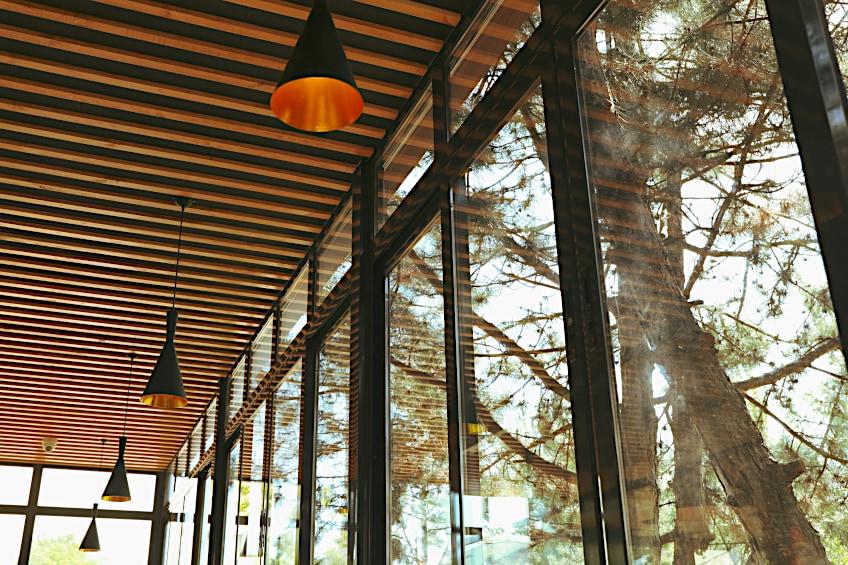
Create Contrast With Thick Wooden Beams
If you’re renovating your entire ceiling, then you probably have loads of conflicting ideas about what you’d like the space to look like. Some like thin understated beams which can draw more attention to the ceiling boards themselves, but you can accomplish the same thing with thick wooden beams too. You can do this either by having your shiplap slates painted white or drawing attention to them by using raw wooden beams. Or, you can have your wooden beams painted white and your shiplap boards unpainted. Either way, it’s a great way to draw attention to the ceiling with little to no effort on your part!
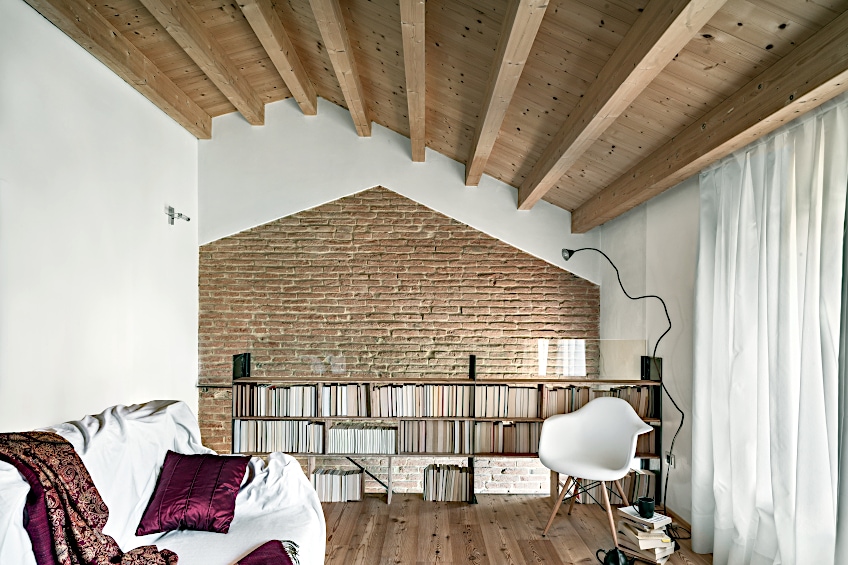
Using Tongue-and-Groove Slats in Small Spaces
We mentioned earlier that tongue-and-groove boards primarily differ from conventional shiplap boards by how they join with one another, but another characteristic unique to tongue-and-groove slats is that they are usually shorter than shiplap boards too. This means that they can be used in smaller spaces without having to cut and dress them too much, and this makes them perfect for small spaces like attic side rooms or even closet interiors. It also means that tongue-and-groove ceiling ideas feature loads of intricate layouts and shapes which can make a space feel rather special compared to the shiplap counterpart.
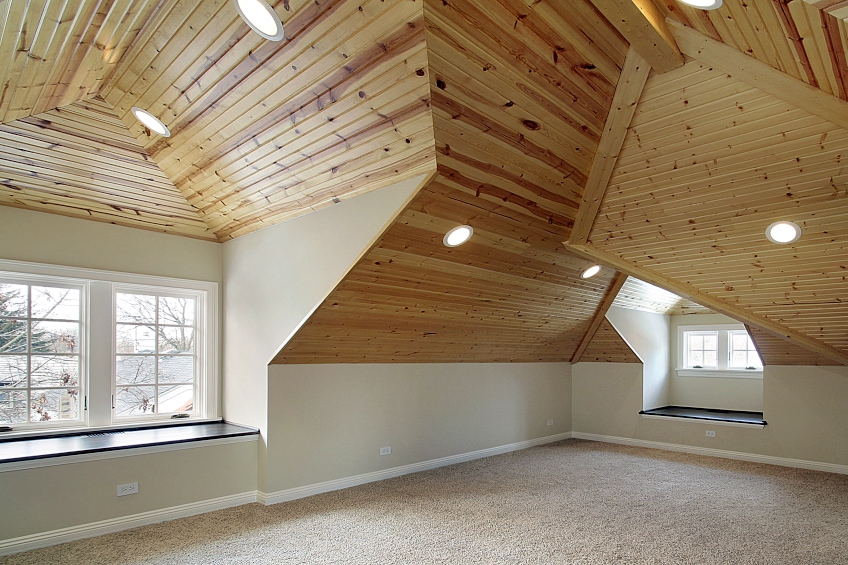
Creating Shiplap Cathedral Ceilings
Cathedral ceilings are usually reserved for those who are particularly wealthy, but they’re actually pretty easy to erect and cost less than conventional ceilings (but you will miss the insulation). Shiplap slats are one of the best materials to use in the construction of cathedral ceilings because of their immense length. They also have the structural integrity needed to achieve this design with minimal support needed by cross members. While we’re on the topic of supports, you can either have your shiplap ceiling exposed along with your beams or paint either one of them to create some contrast.
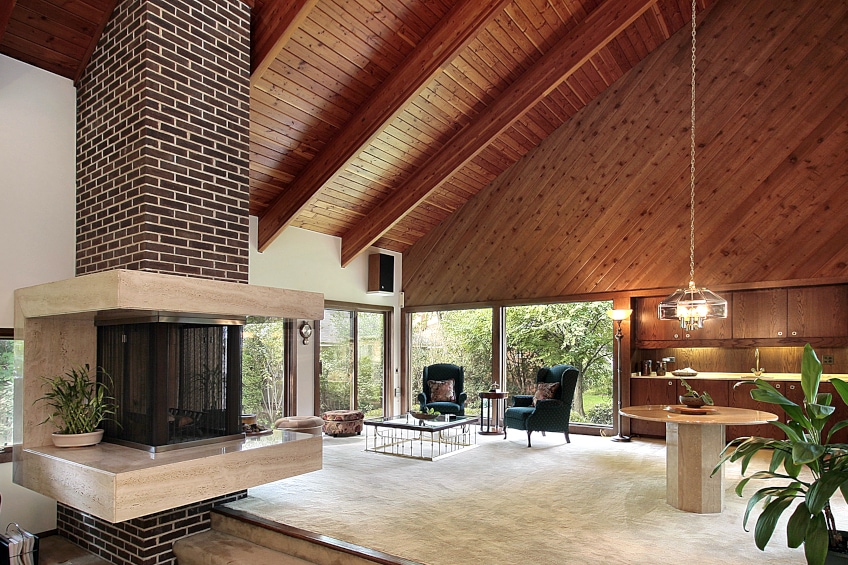
Are There Any Drawbacks to Shiplap/Tongue-and-Groove Ceilings?
While the look and feel that shiplap ceilings provide are great, there are a few notable drawbacks to using this material to create your ceilings. After all, no one material is perfect, that’s why we have so many of them in our homes and offices! This being said, let’s have a look at some of the cons of shiplap ceilings since we’ve extensively discussed the pros.
Shiplap ceilings are made of wood which tends to attract a lot of rust and insects. While there are ways of mitigating this, the reality is that in order to keep your shiplap ceiling in tip-top shape you will undoubtedly have to perform regular maintenance on it, and this can be a bit time-consuming if you have a busy lifestyle.
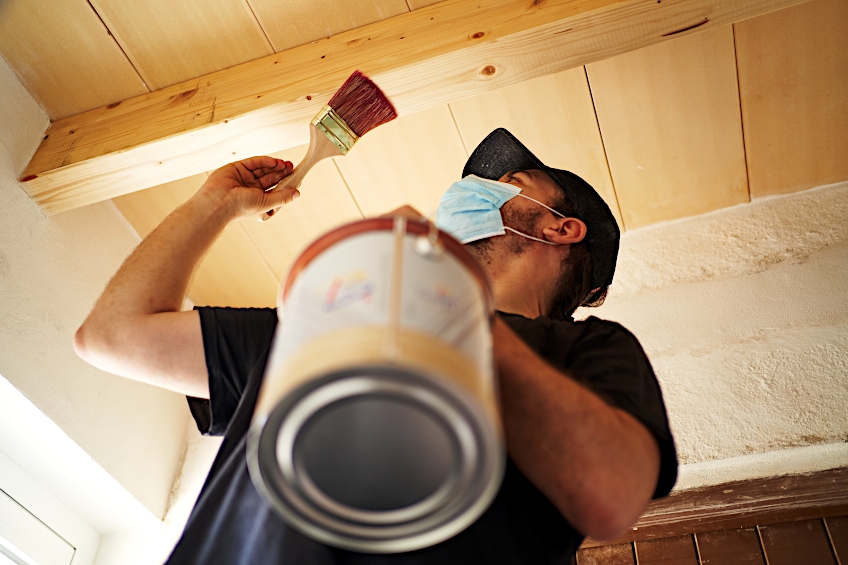
Other than the constant presence of dust, the shiplap ceiling doesn’t do particularly well in moisture-rich environments, and thus installing them in such areas should be avoided. However, shiplap can be treated and maintained to shed moisture on contact, but this process can be quite costly even though shiplap itself is relatively inexpensive.
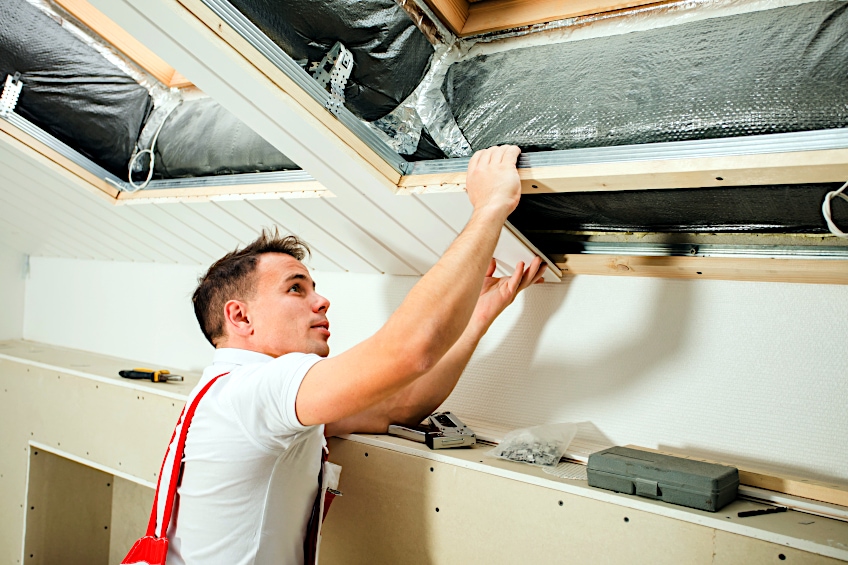
Also, we mentioned all of the positive aesthetic characteristics of shiplap, but they aren’t always suited to a home’s décor. Unless your home has an existing shiplap presence, or you intend to implement it in the majority of your space (or in a large main area) it’s best avoided. If you have a modern home that implements loads of stainless steel and brick into its overall look, shiplap can look a bit tacky and old hat in comparison.
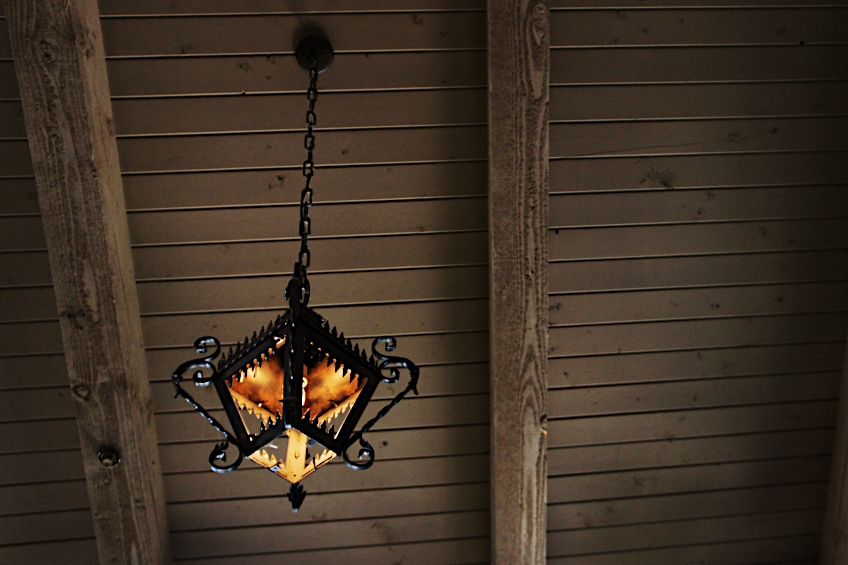
This being said, an alternative version of the continuous expanse of wood that shiplap and tongue-and-groove ceilings provide is the wooden slat ceiling. The strong graphic qualities created by the lines between slats compliments modern and minimalist interiors very well, with the added benefit of bringing the warmth of a natural material into otherwise clinical spaces. If executed correctly, they even have acoustic benefits.
Now that you know what shiplap is, what tongue-and-groove boards are, how they a be used on your ceiling and walls, the different ways they can be arranged, which colors suit them best, and how you can impellent different color pallets to really bring attention to them, it’s time for you to go out and put your new-found knowledge to the test. Remember to always consider the scale in which you’ll be using shiplap, and to get a few samples to test this material in space before committing to it.
Frequently Asked Questions
Are Tongue-and-Groove Ceilings Better Than Shiplap?
The primary difference between shiplap and tongue-and-groove joints is the way in which they interlock with one another. Shiplap joints really just rest on one another’s flanges whereas tongue-and-groove joints and a flange and recess which joins them together. Shiplap ceilings are better in warmer climates because their type of wood joints cope with expansion better, while tongue-and-groove joints handle colder climates better.
Does Shiplap Look Good on Ceilings?
A shiplap ceiling can look incredibly beautiful if done correctly and can really add a sense of class to a space. For those who prefer natural materials in their home, or simply enjoy the look of exposed wood, shiplap ceilings are a great alternative to the conventional drywall ceiling. There are tons of shiplap ceiling ideas and tongue-and-groove ceiling ideas out there for you to use as inspiration.
What Size Shiplap Is Best for Ceiling?
While shiplap slats come in a variety of sizes and wood species, the one that is most commonly used in the construction of ceilings is the five-and-a-half-inch board. This is because they provide that classic, understated look all while being a recognizable and aesthetically pleasing air to space in this size.


